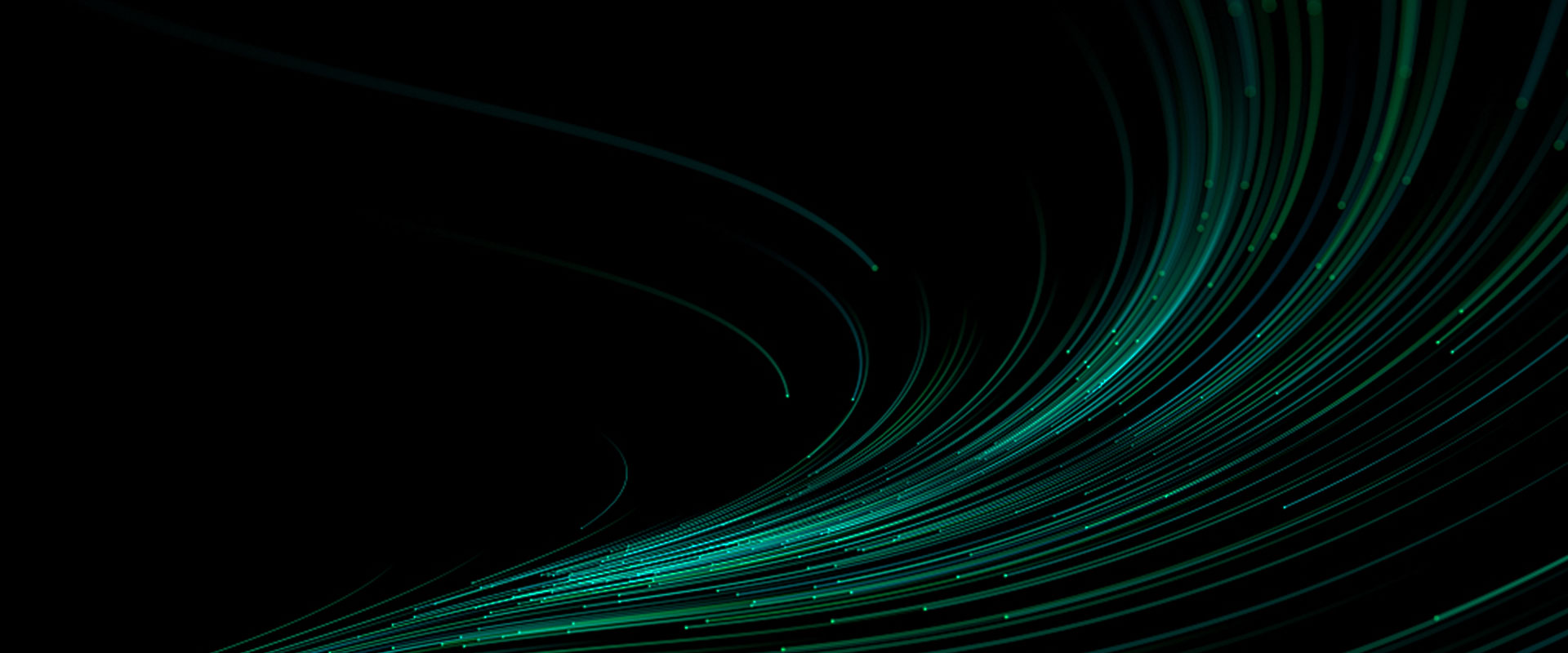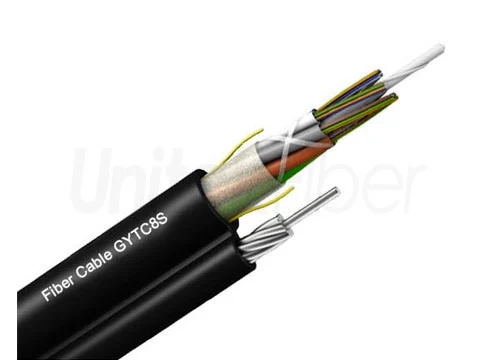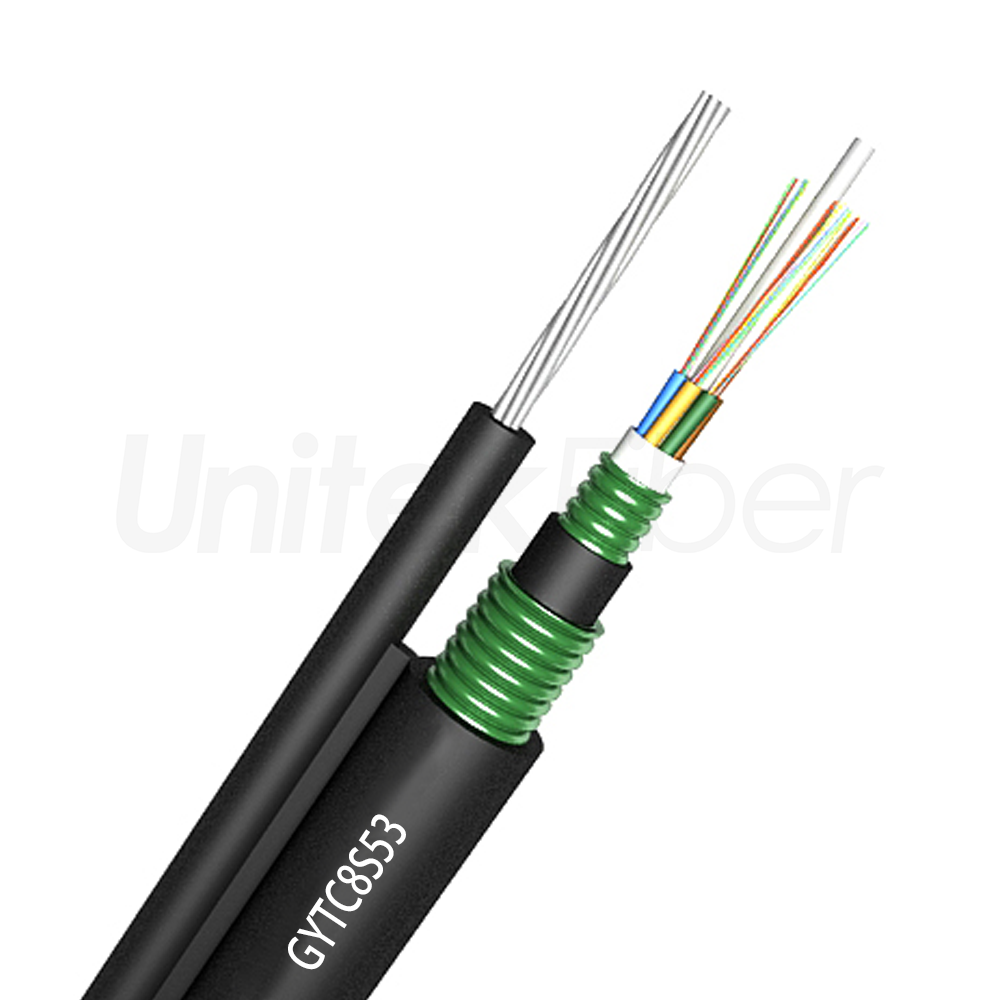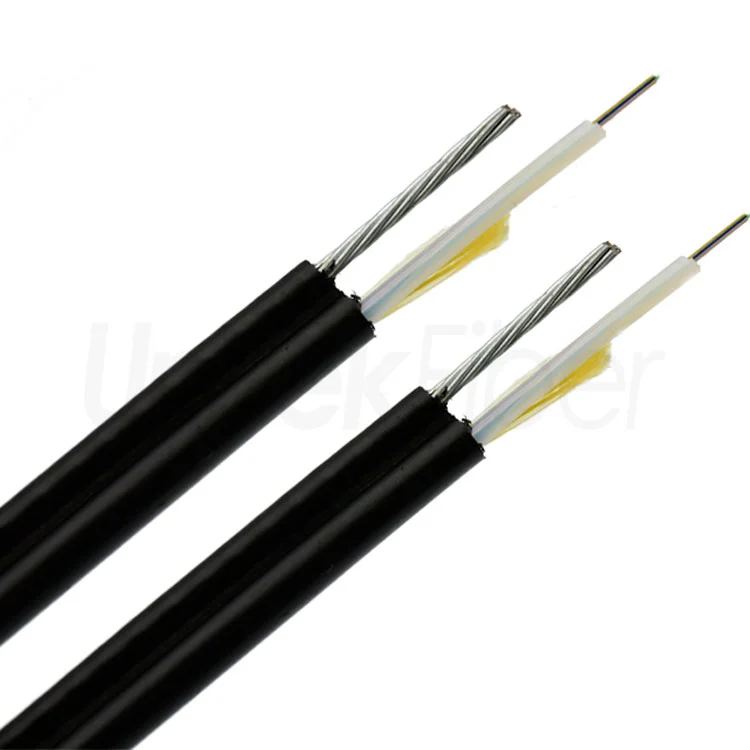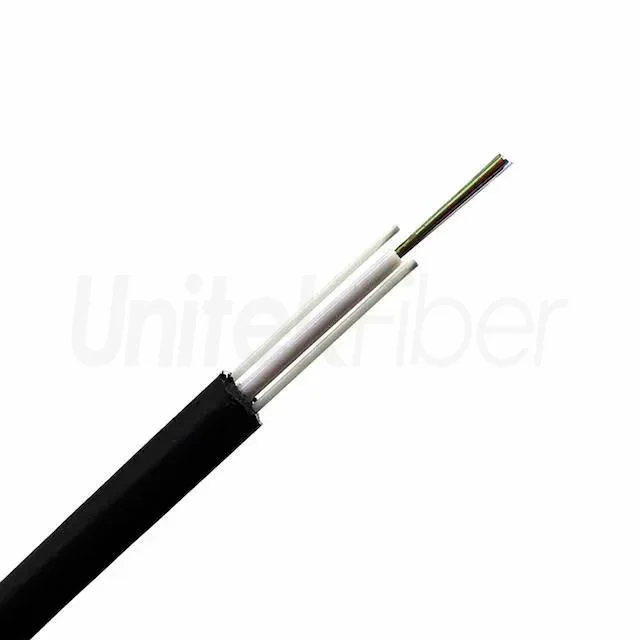
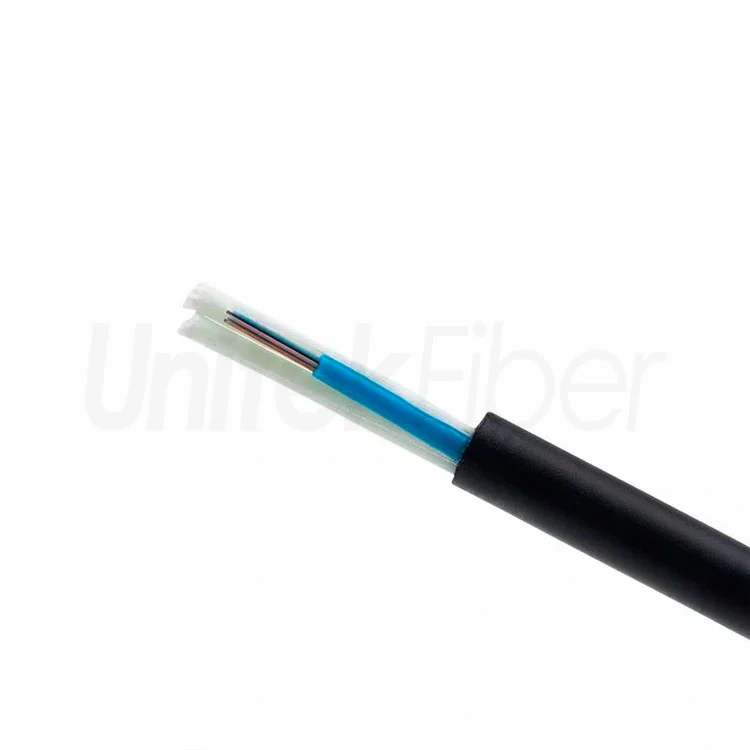
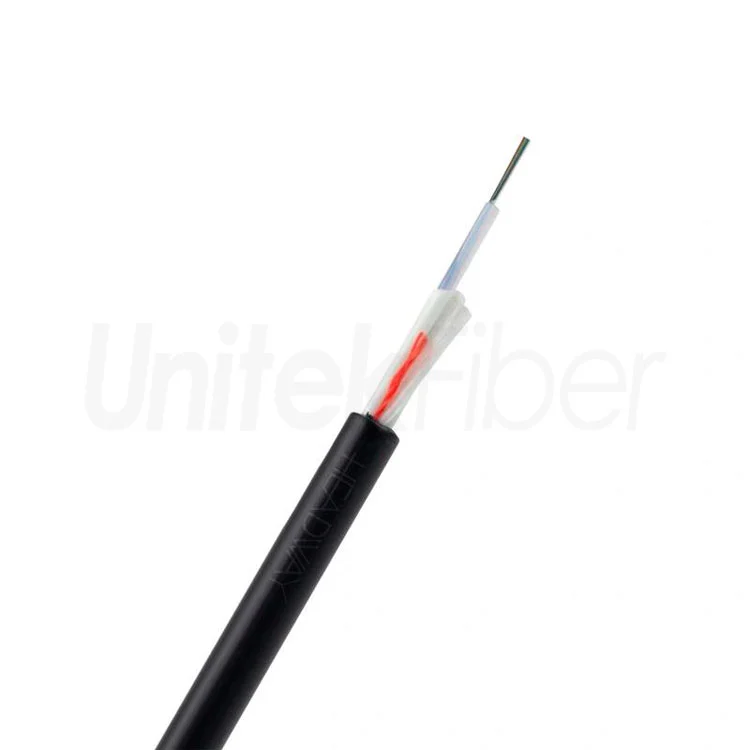

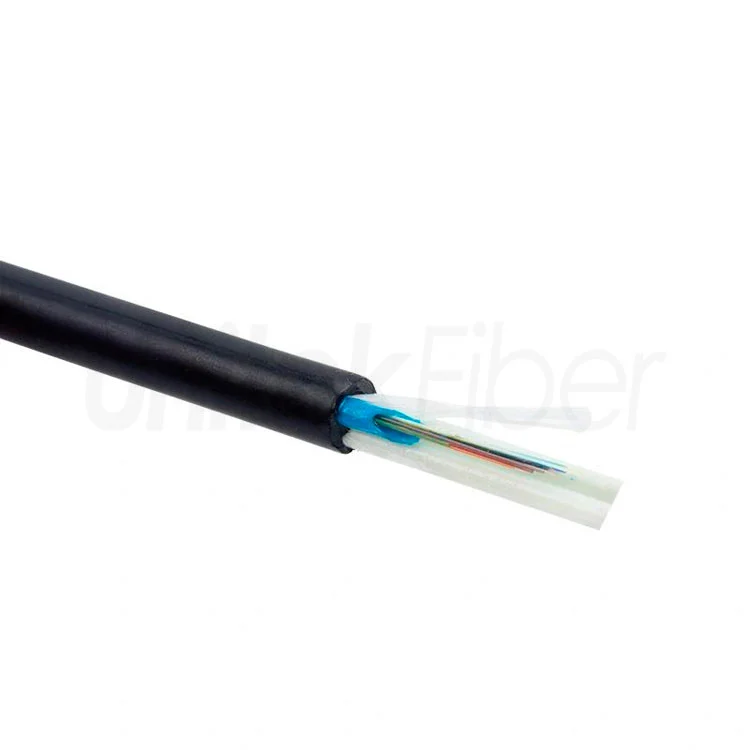
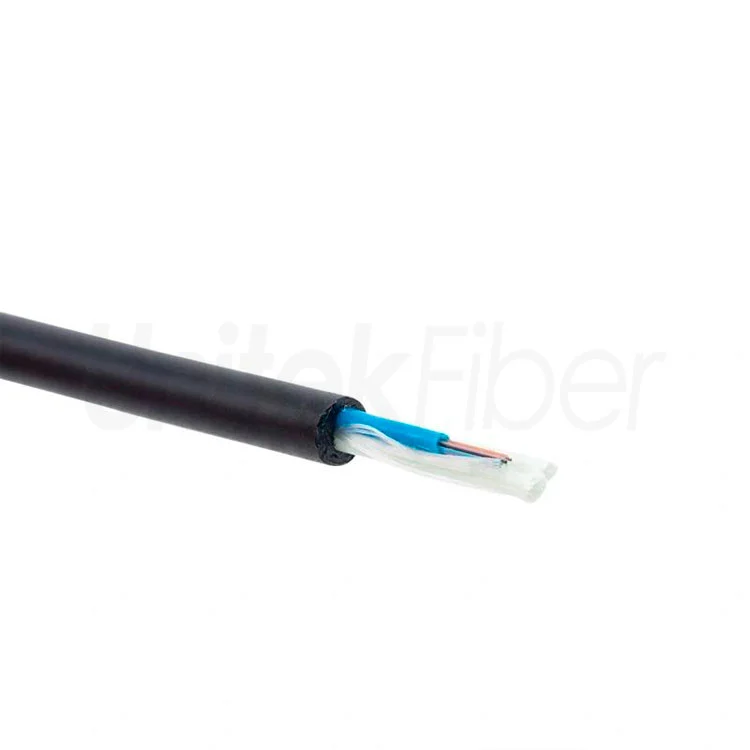
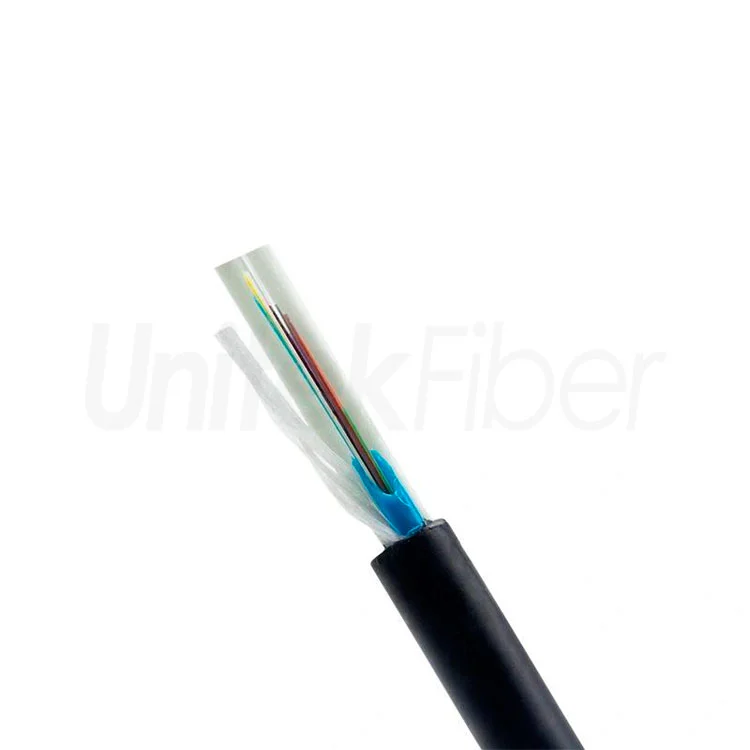






Two parallel fiber reinforced plastic (FRP) elements are placed on the two sides. The ASU fiber optic cable is covered with a single PE outer sheath. Aerial Self-Supported ASU fiber optic cable has a loose tube structure and water-resistant gel compound to provide crucial protection for the fiber. Over the tube, water-blocking material is applied to keep the cable watertight.
Basic structure of ASU fiber optical cable
1. Core: This is the center of the cable where the optical signal is transmitted. It is usually made of high-quality glass or plastic.
2. Cladding: Surrounding the core is a layer of cladding, which has a lower refractive index than the core. The cladding helps to keep the light signal confined within the core and prevents it from leaking out.
3. Coating: The outermost layer of the optical cable is the coating, which provides protection to the core and cladding. This layer can be made of different materials, such as PVC or nylon.
4. Strength Members: Surrounding the coating is a layer of strength members, usually made of materials like Kevlar or fiberglass, that provide mechanical strength to the cable and protect it against damage during installation.
5. Jacket: Finally, there is an outer layer of jacket, which provides additional protection to the cable against environmental factors like moisture and abrasion.
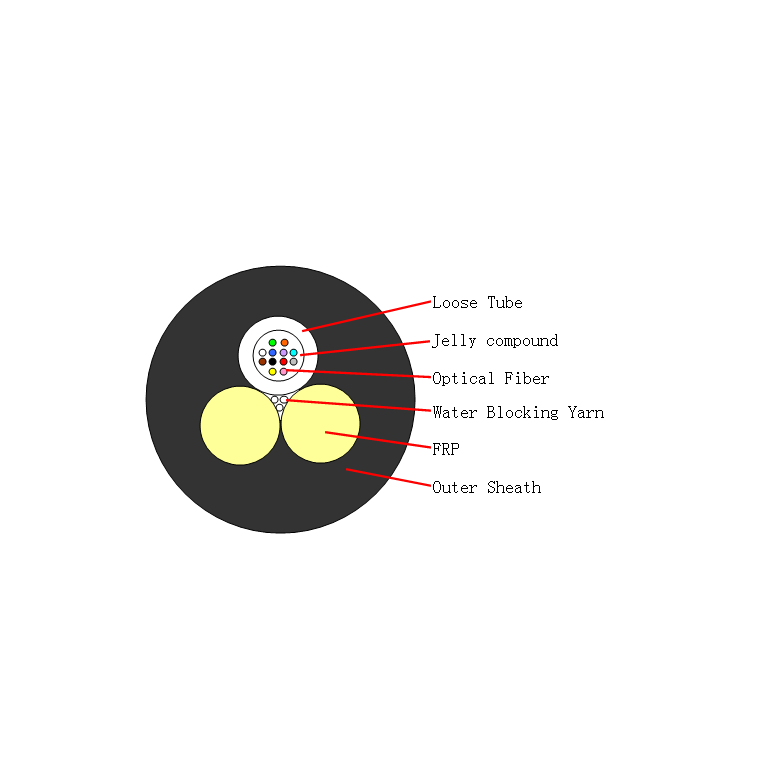
Advantages of ASU fiber optical cable
1. Higher Bandwidth: Fiber optic cable have a much higher bandwidth than copper cables, which means they can transmit more data over longer distances and at greater speeds.
2. Immunity to Electromagnetic Interference: Unlike copper cables, fiber optic cables are immune to electromagnetic interference, which can degrade signal quality and cause data errors in copper cables.
3. Longer Distances: Fiber optic cables can transmit signals over much longer distances without the need for signal boosters or repeaters.
4. Security: Fiber optic cables are difficult to tap into, making them more secure than copper cables, which can be easily intercepted.
5. Lightweight: Fiber optic cables are lighter and more flexible than copper cables, making them easier to install and more cost-effective.
Application range of ASU fiber optical cable
ASU fiber optic cables are used in a wide variety of applications including telecommunications networks, cable television, data centers, industrial automation equipment, military and aerospace, and more. In general, due to the advantages of high bandwidth, long-distance transmission capability and anti-electromagnetic interference, ASU optical cables have a wide range of applications and become an important part of many modern communication and information systems.
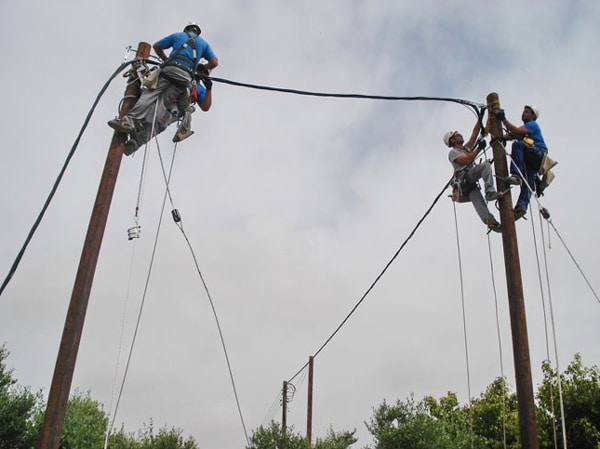
Packing & Delivery of ASU fiber optical cable
The fiber optic cables are usually wound into coils and then wrapped with plastic or paper to protect them from dust and moisture.Then the coils are placed into sturdy outer boxes made of corrugated cardboard or wooden crates for transportation.Fiber optic cables are fragile and must be handled with care during transportation to avoid any damage. Therefore, it is crucial to work with a reputable supplier who has experience in packaging and delivering fiber optic cables.
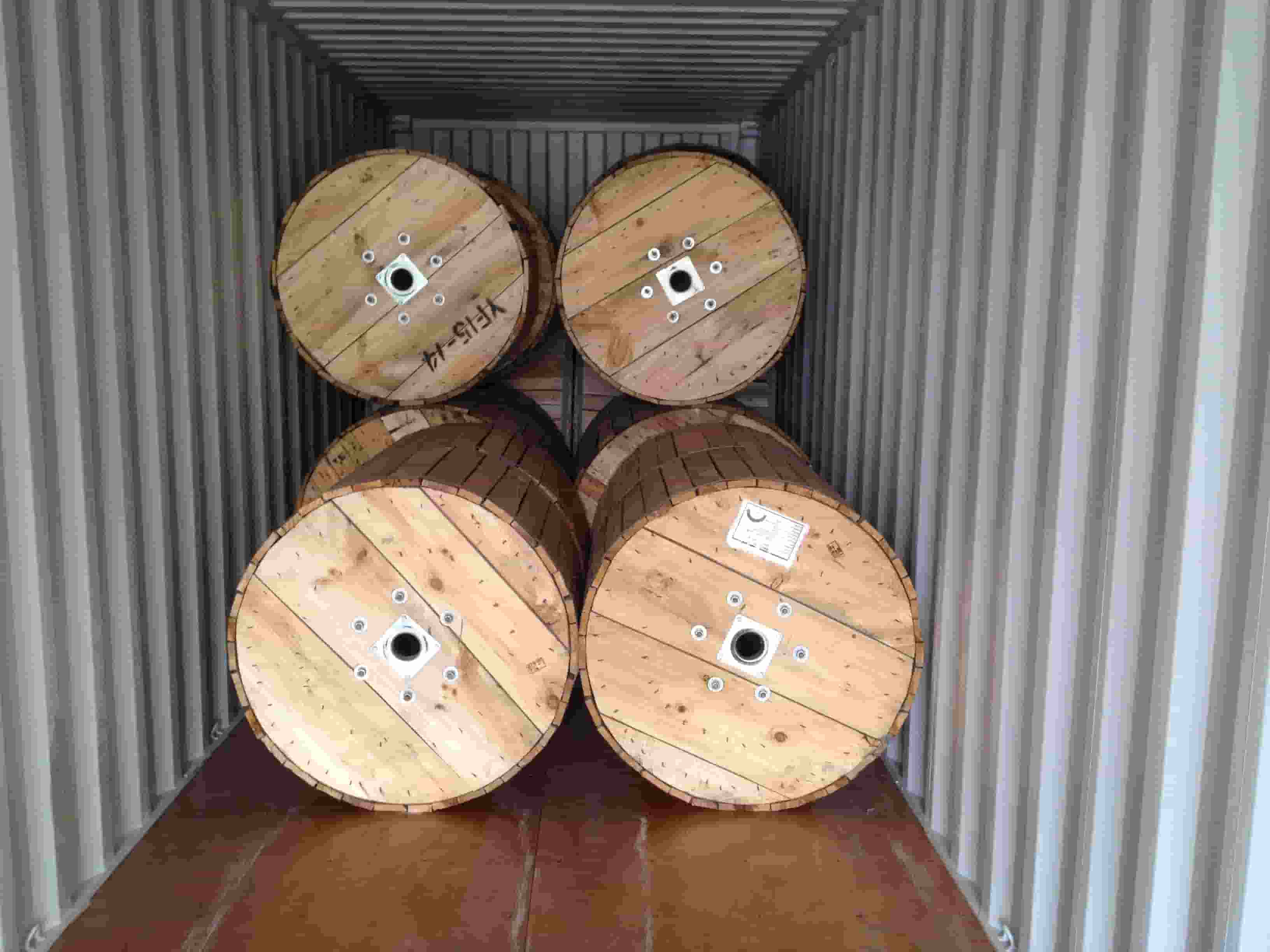
FRP is a Fiberglass-Reinforced Plastic material that has the strength of steel at the fraction of the weight, the FRP makes cable strong tension and anti-bend advantages.
Such as rodents, lighting and incidental voltage, etc.
No, it does not. Just the raw fiber.
If you need sample to test, please contact our sales team or email us sales@unitekfiber.com.
Correct, it is tight buffered.
Arrived well packed. Good quality cables
Speedy delivery, worked perfectly great value
These have worked perfectly. Good quality cables and priced very reasonable.
Very quick delivery and the quality of the cable looks great.
Just what I needed, quick shipment reasonably priced.

